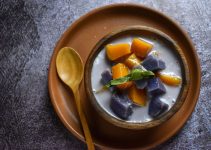Gimbab, a beloved Korean dish, combines the simplicity of rice with the vibrant flavors of fresh vegetables, savory proteins, and tangy pickles, all wrapped in a sheet of seaweed. Often compared to Japanese sushi, Gimbab has its own unique identity and cultural significance, offering a delightful and nutritious meal that is both portable and versatile. The name “Gimbab” comes from “gim,” meaning seaweed, and “bab,” meaning rice, reflecting its essential components.
The Essence of Gimbab: Ingredients and Preparation
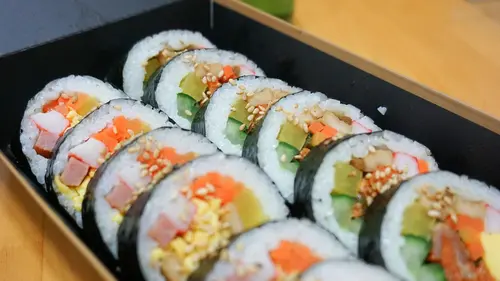
At the heart of Gimbab lies its carefully selected ingredients and meticulous preparation. The foundation is a bed of seasoned rice, typically flavored with sesame oil and salt. This rice is spread evenly over a sheet of roasted seaweed, creating a canvas for a variety of fillings. Traditional fillings often include julienned carrots, spinach, pickled radish (danmuji), eggs, and proteins such as beef, fish cake, or crab sticks. These ingredients are arranged in a harmonious balance, ensuring each bite is a burst of flavor and texture.
The preparation of Gimbab is an art form. Once the fillings are placed, the seaweed and rice are rolled tightly using a bamboo mat, creating a compact and visually appealing roll. The roll is then sliced into bite-sized pieces, each showcasing a beautiful cross-section of the colorful ingredients within. The final touch is a light brushing of sesame oil and a sprinkle of sesame seeds, adding a nutty aroma and flavor.
The Joy of Making Gimbab: A Communal and Creative Experience
Making Gimbab is a joyful and communal activity that brings people together. In Korea, it is common for families and friends to gather and prepare Gimbab for picnics, school lunches, or festive occasions. The process of making Gimbab allows for creativity and personal expression, as individuals can customize their rolls with their favorite ingredients.
The communal nature of Gimbab preparation fosters a sense of togetherness and shared enjoyment. Whether it’s a casual family gathering or a celebratory event, the act of making and sharing Gimbab strengthens bonds and creates lasting memories. This tradition of communal cooking and eating reflects the importance of family and community in Korean culture.
Health Benefits of Gimbab: A Nutritious and Balanced Meal
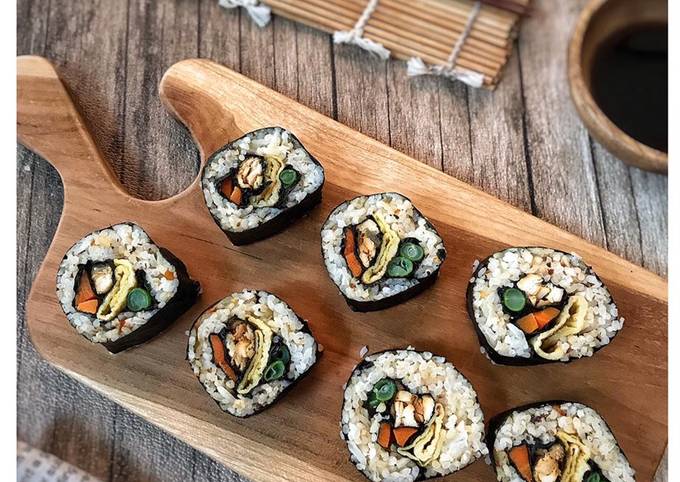
Gimbab is not only delicious but also a nutritious choice that offers a balanced combination of carbohydrates, proteins, and vegetables. The use of fresh and wholesome ingredients ensures that Gimbab provides essential vitamins and minerals. The rice supplies energy, while the vegetables contribute fiber, vitamins, and antioxidants. Proteins like beef, fish, or tofu add to the nutritional value, making Gimbab a well-rounded meal.
The inclusion of pickled radish and other fermented ingredients in Gimbab also supports digestive health. These fermented foods are rich in probiotics, which promote a healthy gut microbiome and aid in digestion. The use of sesame oil, a source of healthy fats, further enhances the nutritional profile of Gimbab.
Gimbab in Popular Culture: A Symbol of Korean Culinary Heritage
Gimbab has transcended its role as a traditional Korean dish to become a symbol of Korean culinary heritage and innovation. Its popularity has spread beyond Korea’s borders, captivating food enthusiasts around the world. The visual appeal of Gimbab, with its colorful and neatly arranged ingredients, makes it a favorite subject for social media posts, food blogs, and cooking shows.
In recent years, Gimbab has been featured in Korean dramas and films, further elevating its status as an iconic dish. These cultural representations showcase Gimbab as a beloved part of everyday life in Korea, highlighting its versatility and the joy it brings to those who make and eat it.
Modern Variations: Exploring the Diversity of Gimbab
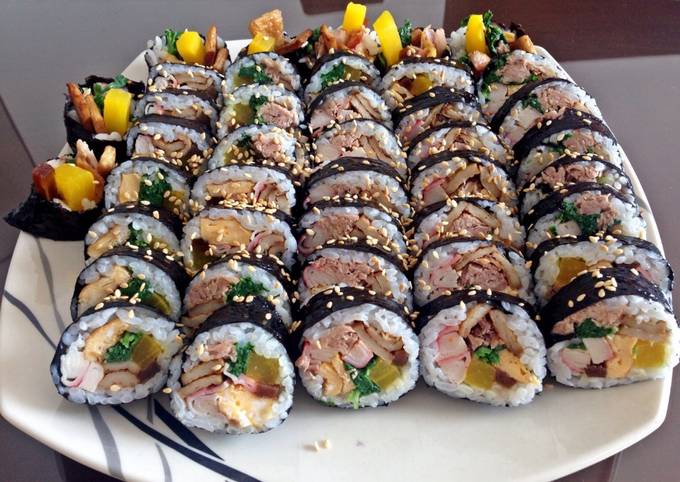
While traditional Gimbab remains a favorite, modern variations have emerged, reflecting the creativity and adaptability of this dish. Chefs and home cooks alike experiment with different ingredients and flavors, resulting in innovative versions of Gimbab. Some popular variations include:
- Vegetarian Gimbab: Packed with fresh and pickled vegetables, tofu, and avocado, this version caters to vegetarian and vegan preferences while retaining the vibrant flavors of traditional Gimbab.
- Spicy Gimbab: Incorporating spicy ingredients like kimchi, spicy tuna, or gochujang (Korean red chili paste), this variation adds a fiery kick to the classic roll.
- Fusion Gimbab: Combining elements from other cuisines, such as using quinoa instead of rice or adding ingredients like cheese or bacon, fusion Gimbab offers a unique twist on the traditional recipe.
These variations demonstrate the versatility of Gimbab and its ability to evolve while maintaining its core characteristics.
Preserving Tradition: The Cultural Significance of Gimbab
For many Koreans, Gimbab is more than just food; it is a symbol of cultural heritage and familial bonds. The tradition of making Gimbab is passed down through generations, with each family adding its own unique touch to the recipe. This practice not only preserves the culinary techniques and flavors of the past but also reinforces the cultural identity and continuity of Korean traditions.
The significance of Gimbab extends beyond the home kitchen. It is a popular dish for celebrations, festivals, and special occasions, symbolizing joy and togetherness. The preparation and sharing of Gimbab during these events reflect the communal values and the emphasis on harmony and collaboration in Korean culture.
Conclusion: Embracing the Glory of Gimbab
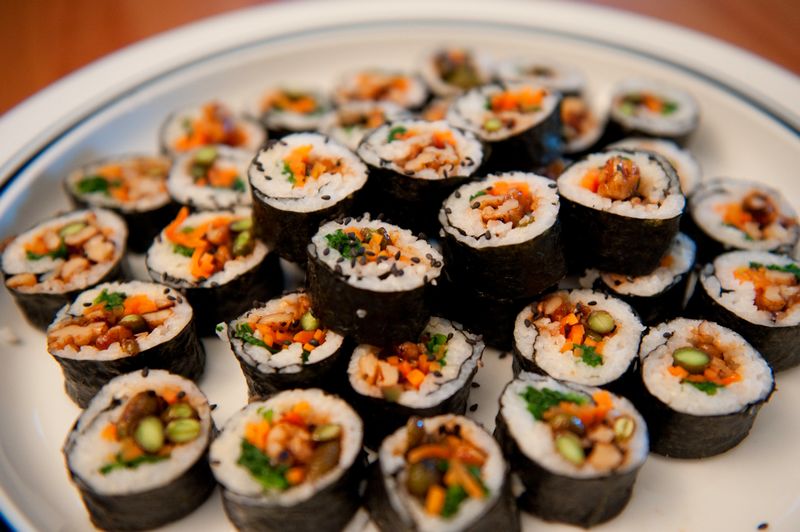
In conclusion, Gimbab is a culinary gem that embodies the vibrant flavors, nutritional benefits, and joyful traditions of Korean cuisine. From its meticulously prepared ingredients to its communal and creative preparation process, Gimbab offers a delightful eating experience that celebrates the essence of Korean culinary heritage.
As we embrace the glory of Gimbab, we honor the generations of Koreans who have perfected this dish and shared it with the world. Whether enjoyed at a family picnic, a festive celebration, or a trendy restaurant, Gimbab brings a touch of Korea’s rich cultural heritage to every meal.
Explore the magic of Gimbab and let it inspire your culinary adventures, bringing the flavors and fatcai login traditions of Korea to your table. Whether you are making it at home or savoring it at a local eatery, the joy of Gimbab awaits, ready to delight your senses and bring a smile to your face.




